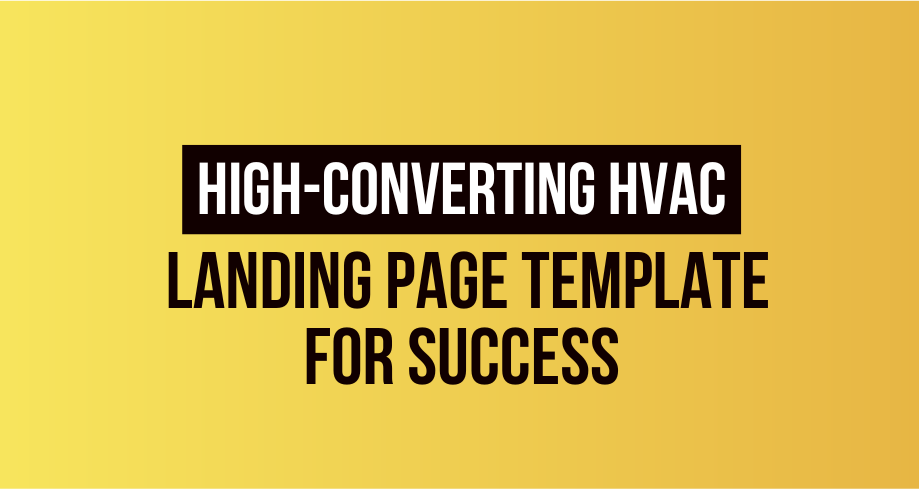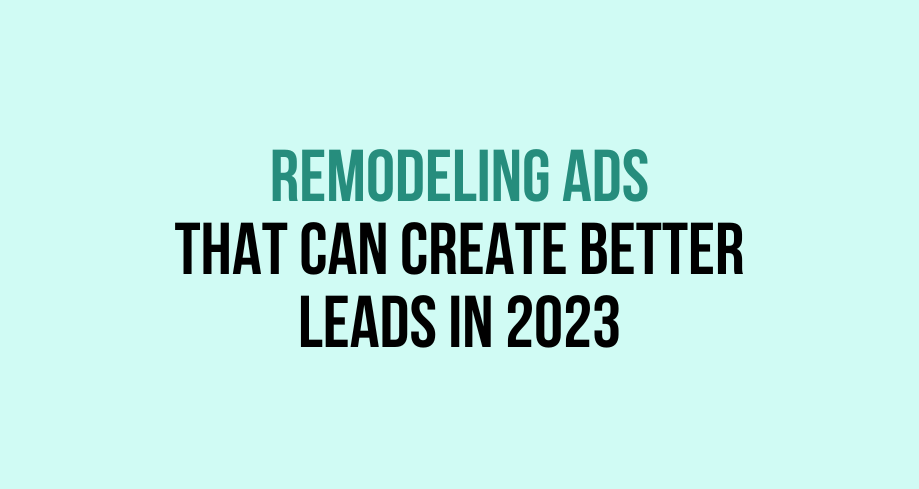In the fast-paced, competitive world of the HVAC industry, having a powerful online presence is essential for success. A well-crafted landing page can make all the difference when it comes to attracting potential clients and converting them into loyal customers. That’s where our HVAC Landing Page Template comes in. Specifically designed for the unique needs of HVAC professionals, this template seamlessly blends eye-catching visuals, persuasive copy, and strategic call-to-actions to create an online experience that captivates visitors and drives results. Let’s explore how this customizable, easy-to-use template can help you elevate your HVAC business and set the foundation for long-term growth.
Purpose of a Landing Page
A landing page aims to provide a targeted and focused online experience for users, with the ultimate goal of driving specific actions or outcomes. These actions can include lead generation, sales conversions, email list sign-ups, event registrations, or downloads.
Landing pages are often designed as standalone web pages, separate from a company’s main website. They are linked to marketing campaigns such as pay-per-click (PPC) ads, social media promotions, or email marketing.
Some common purposes of a landing page include:
- Lead generation: Landing pages often capture leads by encouraging visitors to provide their contact information in exchange for something valuable, such as a free ebook, webinar, or product trial. The collected data can be used for future marketing or sales follow-ups.
- Sales conversion: A landing page can be designed to promote a specific product or service to convince visitors to purchase. This type of landing page typically includes persuasive copy, strong call-to-action buttons, and relevant visuals to help guide the visitor toward completing a transaction.
- Event registration: Landing pages can be created to promote events, such as webinars, conferences, or workshops, and encourage visitors to register. These pages typically provide essential event details, highlight the benefits of attending, and offer a straightforward registration form.
- Promoting special offers: Businesses may use landing pages to showcase limited-time offers, discounts, or promotions. By focusing solely on the rise, these pages can create a sense of urgency and encourage visitors to take immediate action.
- Building brand awareness: A landing page can also introduce a new product or service, share important company news, or highlight a specific marketing campaign. These pages aim to engage visitors, educate them about the brand, and create a positive impression.
What is HVAC Landing Page Template?
An HVAC Landing Page Template is a pre-designed, customizable webpage layout specifically created for businesses in the Heating, Ventilation, and Air Conditioning (HVAC) industry. This template is a starting point for developing a high-converting landing page that effectively showcases your HVAC services, generates leads, and drives sales.
The HVAC Landing Page Template typically includes key elements such as:
- Attention-grabbing headlines: Compelling headlines that convey the benefits of your HVAC services and capture the attention of potential customers.
- High-quality visuals: Engaging images or videos highlighting your services and demonstrating your professionalism and expertise in the HVAC industry.
- Strong call-to-action (CTA) buttons: Prominent, action-oriented CTAs that encourage visitors to take desired actions, such as scheduling a consultation, requesting a quote, or signing up for a newsletter.
- Testimonials and social proof: Customer reviews, case studies, or industry certifications that help build trust and credibility with potential clients.
- Mobile-responsive design: A layout that adapts to different screen sizes and devices, ensuring a seamless user experience across desktops, smartphones, and tablets.
Using an HVAC Landing Page Template saves time and resources while creating a professional and effective online presence. The template is designed to help you attract more visitors, engage potential customers, and ultimately convert them into leads and sales for your HVAC business.
How to Maximize Lead Generation from Your HVAC Landing Page Design
If you’re in the HVAC (Heating, Ventilation, and Air Conditioning) business, a well-designed landing page can attract potential customers and generate leads. To maximize lead generation from your HVAC landing page design, follow these best practices and additional strategies:
Clear and concise headline:
Craft a compelling headline that quickly communicates the value of your HVAC services to potential customers. Keep it clear, concise, and focused on your services’ benefits. A strong headline can significantly impact visitors’ first impressions of heating services and your business.
Strong call-to-action (CTA)
Place a prominent CTA above the fold so it’s immediately visible to visitors. Use action-oriented language like “Schedule a Free Estimate” or “Book a Service Appointment” to encourage users to take the desired action. Experiment with colors, fonts, and button shapes to find the most effective design for your audience.
Mobile-friendly design
Ensure your landing page is responsive and optimized for viewing on mobile devices, as a significant portion of traffic may come from users on smartphones or tablets. A mobile-friendly design ensures that your content is accessible and easy to navigate for all visitors, improving the overall user experience.
Use high-quality visuals
Include eye-catching images or videos that showcase your services and their benefits. Visuals can help establish trust, demonstrate professionalism, and prove your expertise. Consider using custom photography or professionally designed graphics to enhance your landing page’s visual appeal.
Testimonials and social proof
Display customer testimonials or case studies to build credibility and trust. Social proof, such as positive reviews or industry certifications, can also help convince potential customers that you’re the right choice. Incorporate logos of well-known clients or partners to strengthen your credibility further.
Simple and intuitive layout
Keep the layout clean and easy to navigate. Break up large blocks of text with headings, bullet points, or images to improve readability and user experience. Organize your content logically, and make sure your most important information is easily accessible.
Offer value
Provide content that offers value to your potential customers, such as tips for HVAC maintenance or energy efficiency, to demonstrate your knowledge and expertise in the industry. Consider creating a blog or resource section on your website where visitors can access helpful articles, guides, and videos.
Track and optimize
Use analytics tools to track visitor behavior on your landing page and make data-driven decisions to optimize design elements and improve conversion rates. Monitor key performance indicators (KPIs) such as bounce rates, time on page, and conversion rates to identify areas for improvement.
Use targeted messaging
Tailor your landing page’s content to address your target audience’s specific needs and concerns. Segmenting your audience and creating personalized messaging can increase engagement and conversion rates.
A/B testing
Continuously test different landing page elements, such as headlines, CTAs, images, or copy, to identify the most effective combinations. A/B testing can provide valuable insights that help you fine-tune your landing page for optimal results.
By implementing these best practices and additional strategies, you’ll be well on your way to maximizing lead generation from your HVAC landing page design, helping you grow your business and attract more customers. Consistently optimizing your landing page will ensure that you stay ahead of the competition and continue to generate quality leads.
How do HVAC landing pages differ from websites?
HVAC landing pages and websites serve distinct purposes in the digital landscape of the Heating, Ventilation, and Air Conditioning industry. Understanding the differences between the two is crucial for effectively utilizing them to reach your target audience and achieve your marketing goals.
- Specific focus vs. broad overview: An HVAC landing page is designed with a clear direction, such as promoting a particular service, generating leads, or showcasing a special offer. It aims to guide visitors towards a single desired action or outcome. In contrast, a website provides a broad overview of your business, presenting information on various services, company history, and contact details. It is a comprehensive platform for users to explore and learn more about your HVAC business.
- Targeted messaging vs. general information: HVAC landing pages feature targeted messaging tailored to address the needs and concerns of a specific audience segment. This focused approach helps to increase engagement and conversion rates. On the other hand, a website contains general information about your business and services, catering to a broader audience.
- Single objective vs. multiple objectives: An HVAC landing page is designed with a single goal in mind, such as capturing leads or driving sales for a specific service. This singular focus helps to optimize the landing page for higher conversion rates. A website serves multiple objectives, including brand awareness, customer education, and showcasing your range of services.
- Streamlined design vs. complex navigation: HVAC landing pages typically have a simple, streamlined design with minimal distractions to keep visitors focused on the desired action. Websites, in contrast, may have more complex navigation menus and a larger amount of content, as they need to provide information on various aspects of your business.
- Conversion optimization vs. user experience: HVAC landing pages prioritize conversion optimization, utilizing persuasive copy, strong calls-to-action, and other elements designed to drive visitors towards a specific outcome. Websites prioritize user experience, ensuring visitors can easily find the information they need and navigate through different site sections.
Mobile Landing Pages for HVAC
As increasing users access the internet through their mobile devices, HVAC companies must create mobile-friendly landing pages to engage potential customers and drive conversions. Here are some essential features and benefits of mobile landing pages for your HVAC company:
- Responsive design: A mobile landing page should have a responsive design that adapts to different screen sizes and orientations. This ensures a seamless browsing experience for users, regardless of their device.
- Simplified layout: Mobile landing pages should have a simplified layout with easy-to-read fonts and clear, concise content. This makes it easier for users to understand your message and take the desired action quickly.
- Touch-friendly navigation: Mobile landing pages must be touch-friendly, with large, tappable buttons and links that are easy to interact with on a touchscreen. This helps to reduce user frustration and improves the overall user experience.
- Fast loading times: Mobile users often have limited data plans and slower internet connections, making fast loading times critical for a positive user experience. Optimize your mobile landing page by compressing images, using lightweight code, and employing caching techniques to minimize loading times.
- Localized content: Mobile users often search for services and businesses nearby. Tailor your mobile landing page content to include location-specific information, such as your service areas and local promotions, to help attract local customers.
- Click-to-call functionality: Incorporate click-to-call buttons on your mobile landing page, allowing users to contact your HVAC business directly from their mobile device. This feature streamlines getting in touch with your company and increases the likelihood of converting leads into customers.
- Clear calls-to-action: Ensure your mobile landing page has clear, visible calls-to-action (CTAs) that encourage users to take the desired action, such as scheduling an appointment, requesting a quote, or signing up for a newsletter.
- Track and analyze performance: Use analytics tools to track and analyze the performance of your mobile landing page, identifying areas for improvement and making data-driven decisions to optimize your design and content for better conversion rates.
By implementing these features and strategies, mobile landing pages for HVAC businesses can effectively engage potential customers on their preferred devices, driving leads, conversions, and business growth.
Conclusion
An effective HVAC digital marketing strategy requires a well-designed landing page catering to desktop and mobile users. By understanding the differences between landing pages and websites and implementing best practices for each, you can optimize your online presence to generate leads and drive conversions. Creating responsive and engaging mobile landing pages is essential in today’s mobile-centric world, ensuring your HVAC business can connect with potential customers on their preferred devices. By focusing on clear messaging, streamlined designs, and data-driven optimizations, you can create high-converting landing pages that contribute to the growth and success of your HVAC business.




